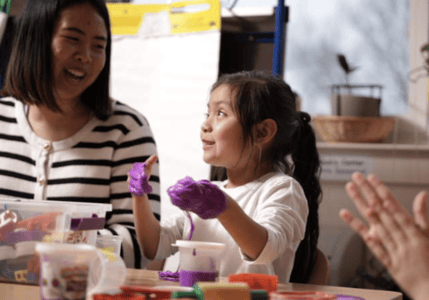
The 8 Steps of a Successful CLASS Implementation
So, what does a successful CLASS implementation look like? In creating the Guide, we gathered feedback from many clients, internal leaders, and XXX to discover the commonalities in what helped Implementing CLASS involves a strategic approach centered around eight key steps designed to continuously improve educator-child interactions. These steps form a comprehensive framework that supports educational leaders to focus, measure, and improve these interactions.
At the highest level, the steps include:
- Build a CLASS Implementation Team: Begin by identifying the teams of stakeholders who will share diverse perspectives from all corners of your program, distribute the responsibilities, and build capacity.
- Invest Stakeholders in Interactions and CLASS: Equip your team with the knowledge and excitement needed to build awareness and buy-in throughout your program.
- Plan for CLASS Data Collection: Create protocols for conducting regular observations to gather data on educator-child interactions. Utilize reliable tools and methodologies to ensure accuracy and consistency.
- Communicate with Educators about CLASS Observations: Inform your educators the goals of the CLASS data collection, what they can expect, and how they can prepare.
- Share Actionable Data to Inform Decisions: After you’ve conducted CLASS observations, it’s time to share this data with your stakeholders. The data is not just about compliance; it’s about driving growth and demonstrating its impact.
- Leverage CLASS Data for Improvement Planning: Collaboratively set improvement goals with educators. Plan ongoing professional development activities that address identified needs and foster continuous growth.
- Help Educators Adopt New Practices: Collaboratively set improvement goals with educators. Plan ongoing professional development activities that address identified needs and foster continuous growth.
- Build CLASS Coaching Capacity: Develop strategies to sustain effective interactions over time. Explore opportunities to scale successful practices across your program or district, ensuring long-term impact.
Real Impact on Children’s Lives
The CLASS system, supported by this guide, helps you create an environment where children thrive. Research consistently shows that high-quality educator-child interactions, as measured by CLASS, lead to significant gains in literacy, math, social skills, and cognitive development, preparing them for future grades and life outside the classroom.
Next Steps
Ready to transform your educational environment? Start exploring the CLASS Implementation Guide today. Take the first step toward improving educator-child interactions and witness the profound impact on children’s learning and development.
Remember, every interaction counts. By leveraging the power of CLASS and this comprehensive guide, you’re investing in a brighter future for the children you serve. Join the movement to create educational experiences that help every child thrive, and let’s make a lasting difference together.

